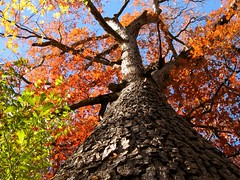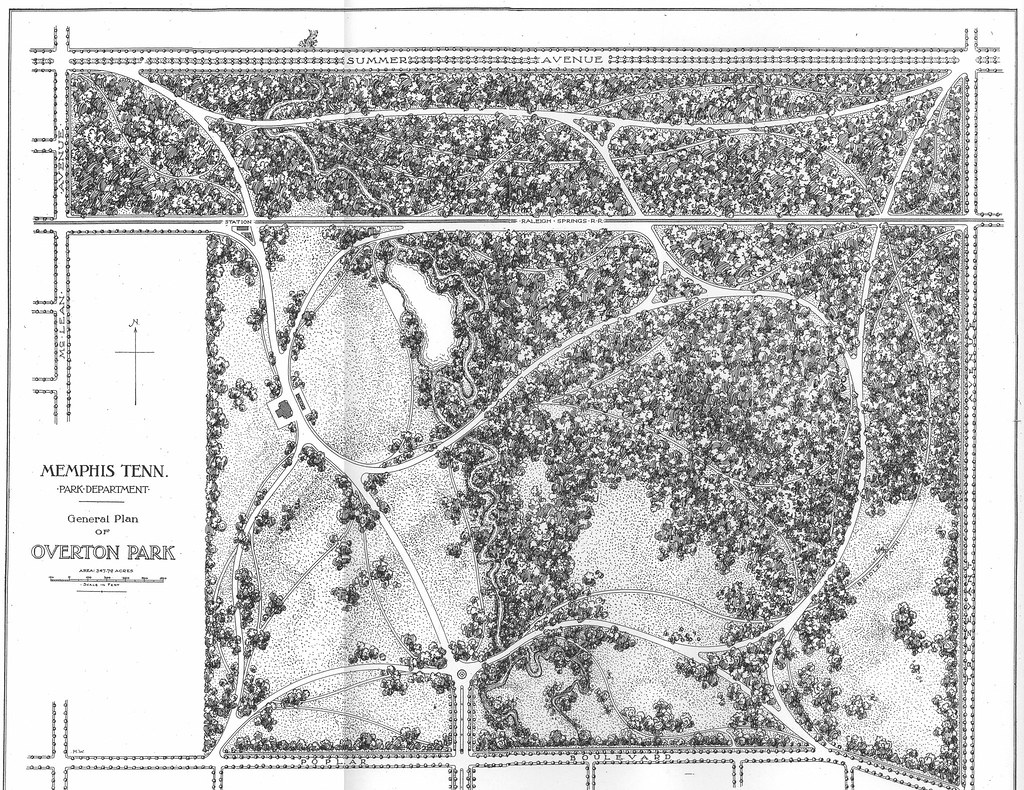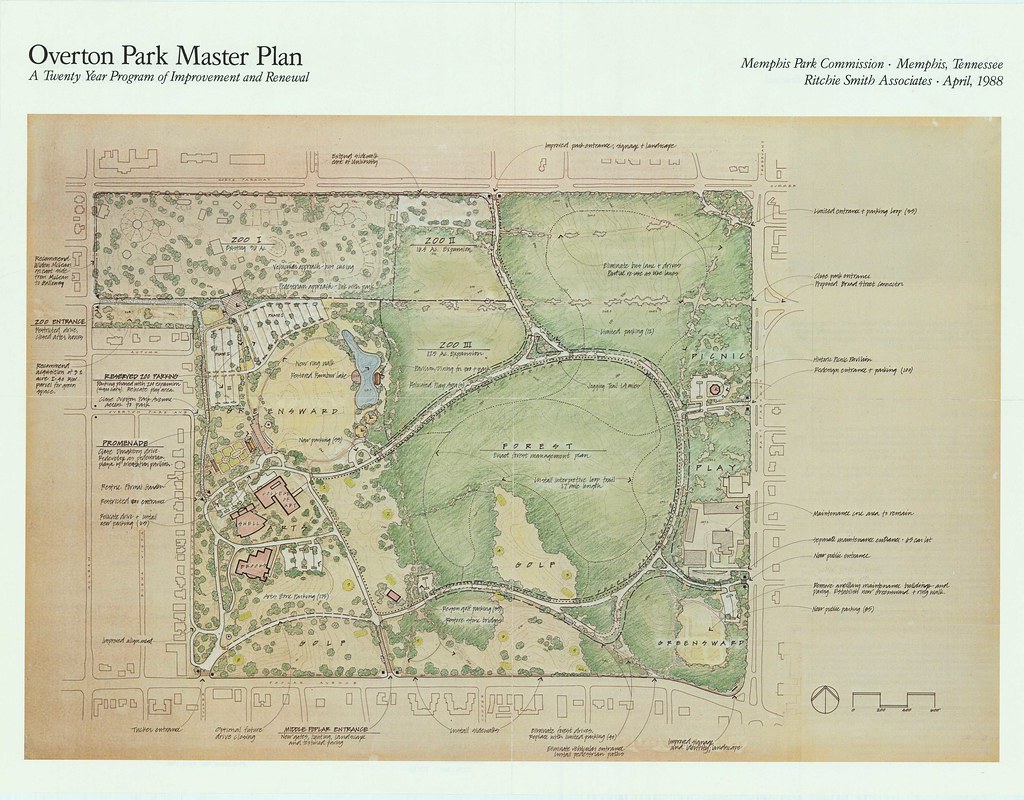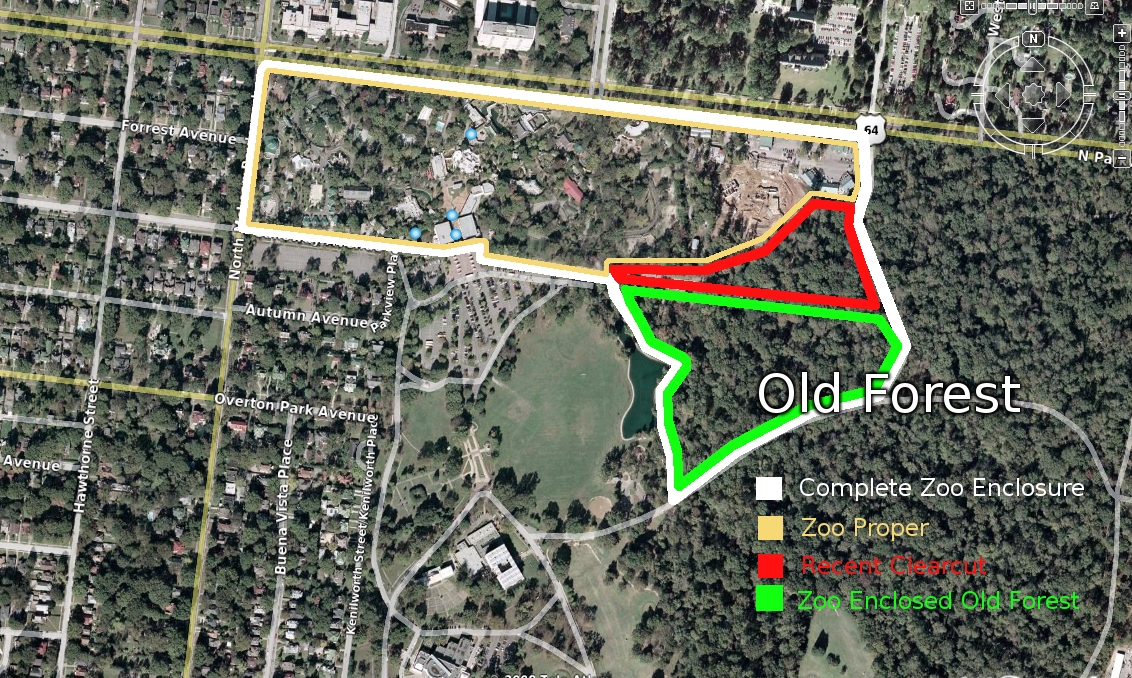Guest Editorial
Friday, April 18, 2008 - Commercial Appeal
Overton Park, symbol for our future success
Young people who decide to make Memphis their home are the key to that success, and they say clearly that green space is a fundamental of the life they seek.
By Glenn Cox
For years, springtime has meant an outing in the park. For more than 100 years, for Memphians that has meant Overton Park.
For untold hundreds of us, it still does. As we prepare to celebrate Earth Day next week, we at Park Friends Inc., the nonprofit park support group, understand why Overton Park remains our pride and is so often featured in literature explaining why Memphis is a great place to live.
When it was created out of Lea Woods at what was then our city's eastern edge, its uncut old-growth forest was, even then, considered a rare and ancient place. Overton Park was an instant success. It was soon improved with a lake and a tasteful art museum constructed out of marble, as well as the city's first golf course, where you could play nine holes of this new sport.
At the park's eastern edge near East Parkway and Poplar, there was a riding stable. Horses were for rent to gentlemen and to ladies who might ride sidesaddle on the bridle paths within the Old Forest.
Soon, nearby residents tied a captured bear named Natch to a tree in the park. From this humble beginning the Memphis Zoo was born. In the late 1950s, the Memphis College of Art was added to the park.
But always, Overton Park was a place to go to be outdoors, to be restored by nature's bounties. It was a place for children to run and play or for adults to hike. Its deep woods were silent except for the voices of songbirds.
It was popular and successful, but its success begat continued growth. The stables became a maintenance shed, which was expanded, and expanded again and yet again, to serve the needs of Midtown far beyond the park's borders. When Memphians needed a firehouse, they found a site -- one that nobody was using, close to the playground, which didn't cost a penny to acquire.
Each addition to the park was progress to someone. But then, as the years passed, some began to ask: Progress at what price?
Apparently, little attention was paid to that question until the unfortunate "Overton Park case," which arose in the 1960s, when the interstate system was coming in and engineers were asked to plan a route from Memphis' then-thriving Downtown out to the growing eastern suburbs.
The engineers' route, straight through Overton Park, was quickly approved by our city fathers, who were ready to move ahead with construction of this virtually "free" project financed by federal and state funding. It was justified as the route with the fewest disruptions to homeowners and with over a mile-long stretch of unoccupied woods, making it unnecessary to displace a single citizen in that portion of the project and having the further virtue that the city would get paid for the land taken. It seemed a win-win situation.
Only, it wasn't. We all paid the price of the bitter lawsuit that followed, with no glory to anyone. Hundreds of homeowners in neighborhoods near Overton Park were displaced for a road never built, and the city was left with no interstate through town.
If there was a lesson in all of that turmoil, it was that people care about parks and green spaces, that such places have a value of their own, and that their value must always be considered in any land-use or development plans.
The users of any park will always have different priorities. A case in point is the recent discussion related to the zoo's clearing of a portion of the forest for construction of its Teton Trek project. What could have been a difficult issue was instead addressed productively among us all, as users of the park with common conservation goals.
The important thing is to give full worth to the value of our natural heritage. Our forebears did, and even today Carol Coletta, a longtime Memphian who is president of CEOs for Cities in Chicago, expresses the case in new and convincing ways.
Our future, she explains, is tied to keeping and developing our 25- to 34-year-olds. Where they decide to live and build a future depends, second only to their job selection, on the quality of life they seek. This generation tells us, ever more strongly, that a fundamental of the quality of the life that they seek is "green space."
Although we devote considerable energy to bringing people in to visit, it is not the people who come into our city to spend money and leave who really matter. We are proud to have them, but what really matters are those who come to stay and grow with us. Their lives, and ours, are anchored in things that last longer than we do.
That's why our parks and trails and riverfront, and our queen mother of parks, with its Greensward and Rainbow Lake and the Old Forest, are so important, not just on Earth Day, but every day.
Glenn Cox is president of the board of Park Friends Inc.
Friday, April 18, 2008
Overton Park, symbol for our future success
Subscribe to:
Post Comments (Atom)











3 comments:
I've got a question tangential to the article.
Would you be opposed if the zoo were to preserve the currently fenced off section of woods with little more than nature trails and perhaps some signs and artfully fenced animal areas?
I'm very pleased with the work yall and the Park Friends are doing to bring attention to the Old Forest as a beautiful and safe place to explore. Growing up in the 80s, the forest most certainly did not have this reputation.
The Zoo exhibit could perhaps serve as an entry point to the rest of the forest, allowing people put off by the seedy reputation to experience and eventually defend this treasure we've been entrusted with in Memphis.
jccvi--personally, yes, i am VERY opposed to this. i have a whole post brewing about this---hopefully i can get it up in the next few days.
as far as glenn's editorial, i just don't get this:
The users of any park will always have different priorities. A case in point is the recent discussion related to the zoo's clearing of a portion of the forest for construction of its Teton Trek project. What could have been a difficult issue was instead addressed productively among us all, as users of the park with common conservation goals.
what is he trying to say here? or rather, what isn't he trying to say?
jccvi - Thanks for the question. Our group's position is that the fence needs to come down.
I see your point about leading people to appreciate the value of the Old Forest as a whole, but do you think Zoo leaders can learn to appreciate the Old Forest first? Would they be able to resist "cleaning up" the forest so visitors don't have to worry about poison ivy, copperheads, etc.?
When Stacey first contacted the Zoo via email to express disapproval of the Teton Clearcut and concern about the fate of the 17 fenced acres, she received an unsigned response stating that the Zoo planned to build a "Chickasaw Bluffs" nature trail and low-impact exhibit in the 17 acres.
Stacey then asked if she could see their development plan for the 17 acres. She got another unsigned email saying that the Chickasaw Bluffs exhibit was only a "working concept" and the Zoo had no immediate plans to do anything in the 17 acres.
How can we trust that the Zoo's story won't just keep on changing? Even if they do build a lovely low-impact nature trail in the 17 acres, how long will it be before the Zoo "needs" to replace that trail with a sexy new exhibit?
Our concern is that the Zoo's leaders will say whatever it takes to pacify as many people as possible, then keep right on doing whatever is most expedient. That tactic has always worked well for the Zoo in the past.
Post a Comment